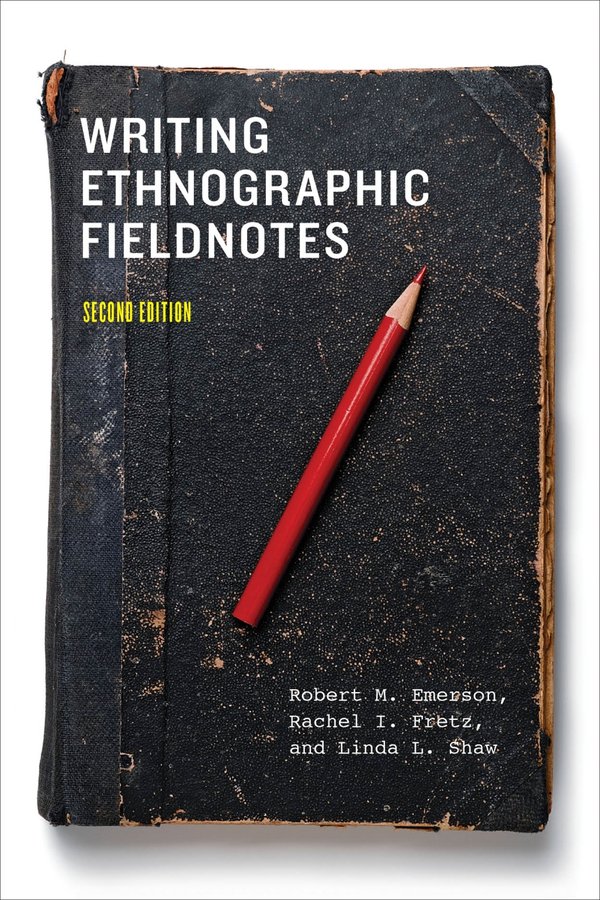
How, When and What to Write
Writing Ethnographic Fieldnotes by Robert Emerson, Rachel Frezt and Linda Shaw is a testament to the intricacies of moulding ethnographic stories. The authors lead readers step by step through the process of crafting fieldnotes - how, when and what to write. Rather than seeing fieldnotes as mere recordings of events, the authors reveal the processes of structuring analysis and writing around events and daily routines, turning lived experience into ‘fieldnote-centered’ text.
Chapters 1 and 2 interrogate the role both fieldnotes and ethnographers play in ethnographic research. Chapters 3 through 5 are especially useful in their practical orientation, guiding readers through the process of writing and writing out from fieldnotes, with extended discussions on different strategies that may be employed. Chapter 6 attends to the process of coding and creating memos that will inform final, finished writing. Chapter 7 discusses the tension between writing for scholarly audiences and the general public, with the authors making a case for ‘narrative tales’ that use literary conventions to appeal to all audiences. Chapter 8 discusses sticky questions of responsibility - to participants in research versus readers, and the ethical questions that surround making public sensitive material.
Especially interesting is the authors’ description of the dialectical, and unanticipated elements of writing ethnography-centered scholarship. For example, creating a narrative requires sifting through messy and seemingly unimportant ‘backstage scribbling’ to tease out a coherent narrative and argument. Embracing the productive messiness of experience creates space for fieldnotes to be used as ‘building blocks’ of arguments rather than examples of evidence. This in turn creates a tension between the descriptive and the analytic. Though they differ in their attention to concrete specificity versus generalisations, both descriptive field notes and analytic memos draw from interpretative and framing processes. Writing fieldnotes then, is not a simple process of an unfiltered recounting of events, but is the first step in meaning-making and storytelling simultaneously.
But what of the unfinished and the unimportant? Where is its place? This question becomes especially important when we consider the interpretative nature of ethnographic analysis. Speaking of service journals that tend to privilege the ‘dramatic’ and ‘remarkable’ rather than the ‘everyday’, the authors make a case for analysis that accounts for it as an analytical category in itself, rather than as context to be relegated to background framings. Doing this requires that writers draw from writings that may otherwise be relegated to ‘journals’ and ‘diaries’, with their abundance of - at first glance - the seemingly irrelevant mundaneness of everyday life. It is this ‘fully human’ participation in the lives of others - and of their research sites - the authors argue, that sets apart ethnography. Not only does this attention to routine hedge against overdetermined arguments, it also opens a window into the field researcher’s own process of meaning-making and makes for compelling stories.
Citation: Emerson, Robert M., Rachel I. Fretz, and Linda L. Shaw. Writing ethnographic fieldnotes. University of Chicago Press, 2011.
30 December 2022